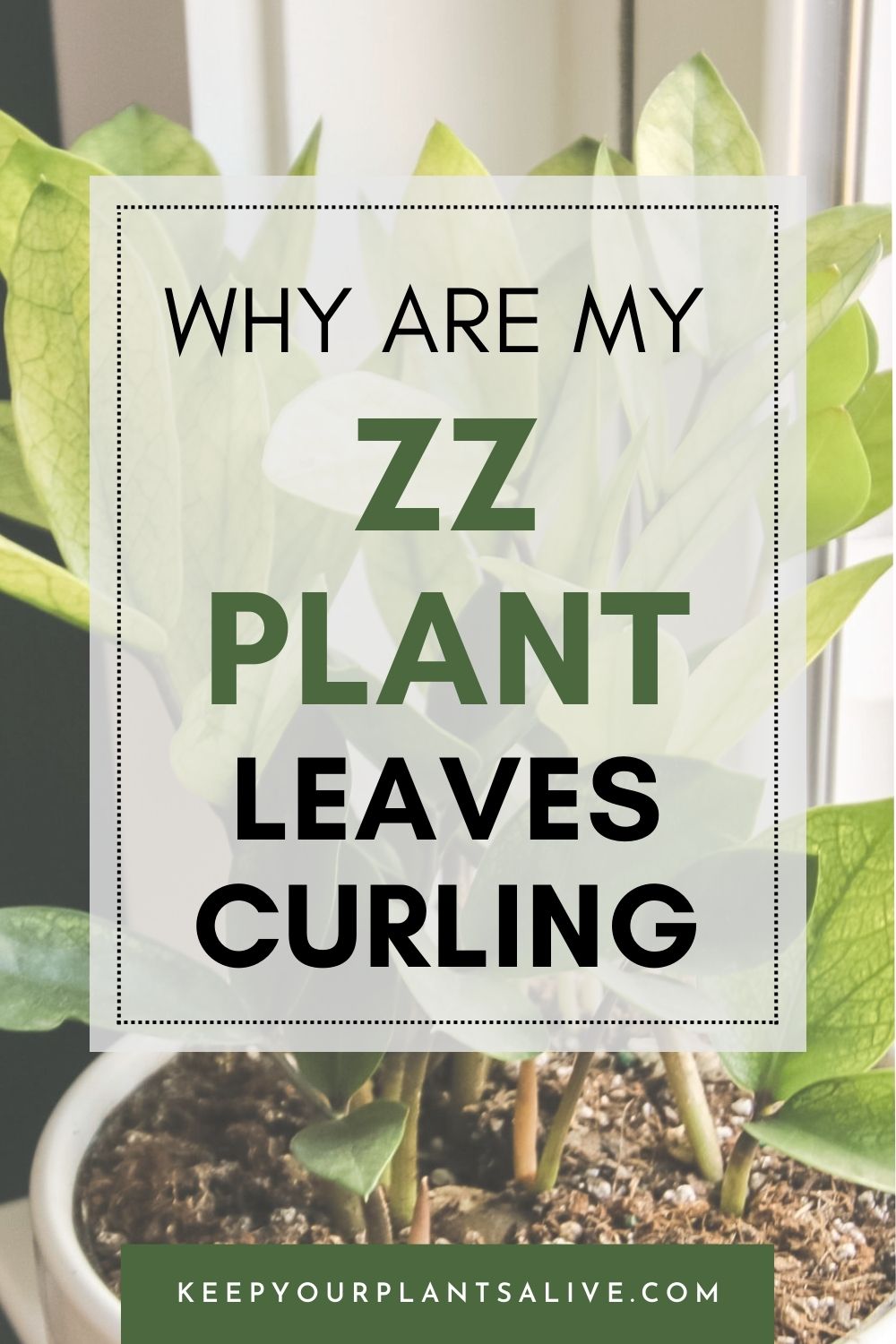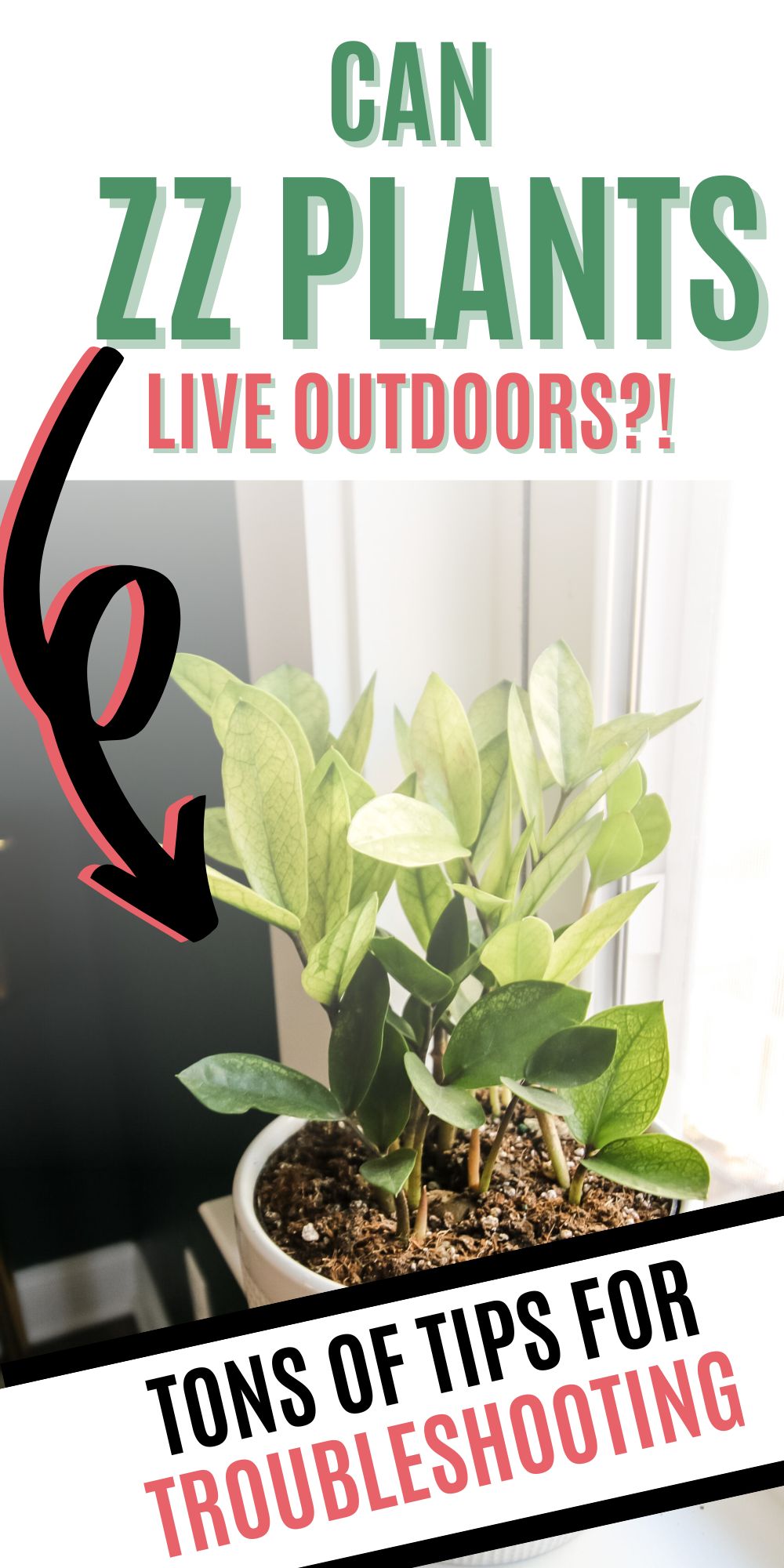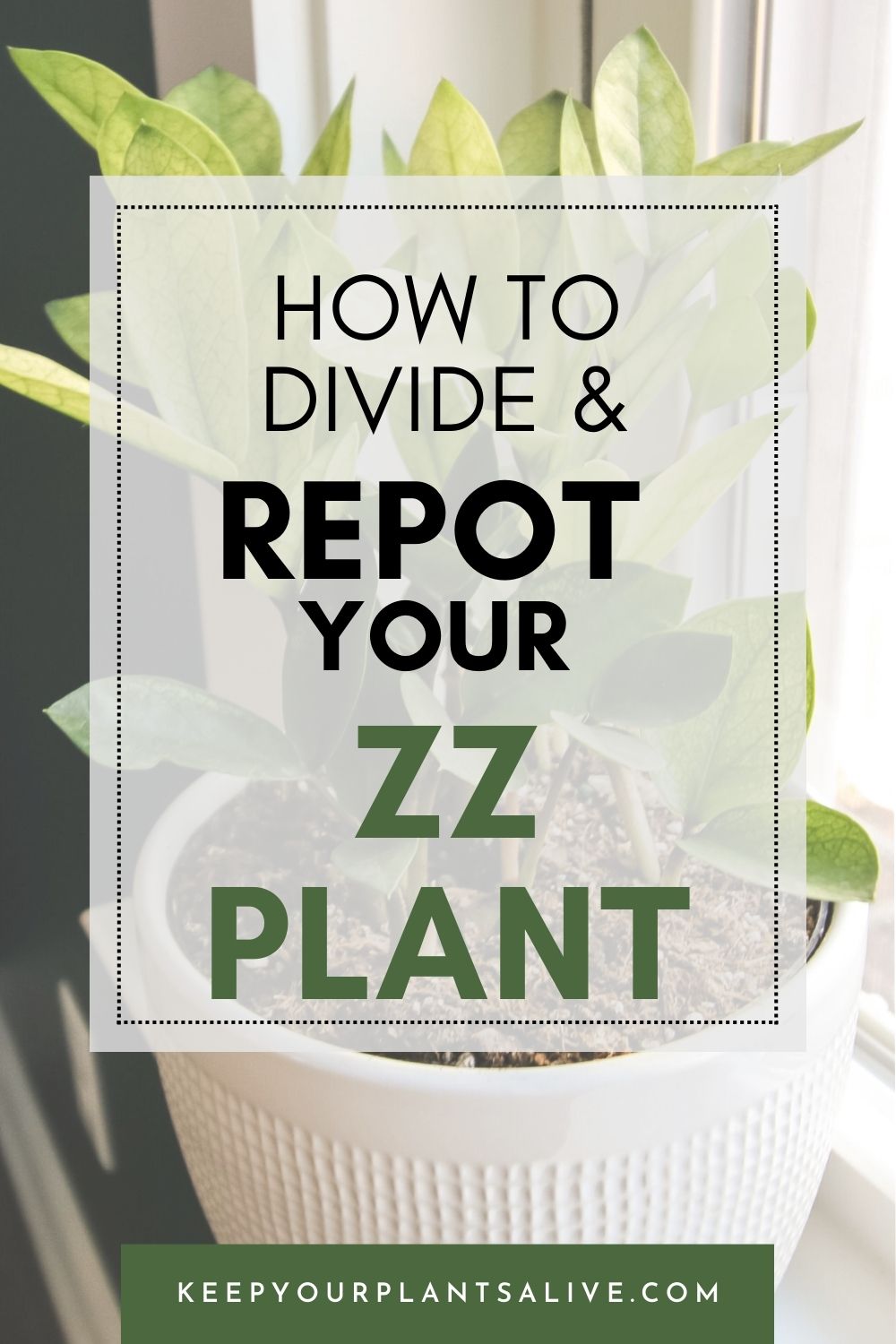Is your ZZ plant drooping? No one likes a sad plant! Here are the top causes of a droopy ZZ plant and how to revive your ZZ Plant!
Amid the search for a low-maintenance care plant, you chose the ZZ plant. Well done, excellent choice!
You have a tropical plant that decorates your home without much worry.
But although these are typically easy care plants, there may come the occasion when you have a droopy ZZ plant in your home.
Which poses the question - why is this happening?
The first rule when it comes to plant care is to always study it before you even begin taking care of it.
By doing so, you’ll understand how it lives, and you’ll be quicker to notice any issues it faces.
Since the ZZ plant is the show's main star for today, you should know that it has a bulb for water storage during dry periods and has water-storing rhizomes to survive drought.
Because they originate from East Africa, where the climate is arid, it’s obvious that ZZs are tolerant of such conditions.
However, you may believe you need to shower it with water daily since you’ve heard through the grapevine that plants adore water.
While the notion is true in many cases, here, overwatering may lead to ZZ plant drooping – and this is just one instance!
So, what are the most common reasons for droopy ZZ plants? We’ve mentioned improper watering, but unfortunately, there’s a whole world of others. Let’s discover them together!
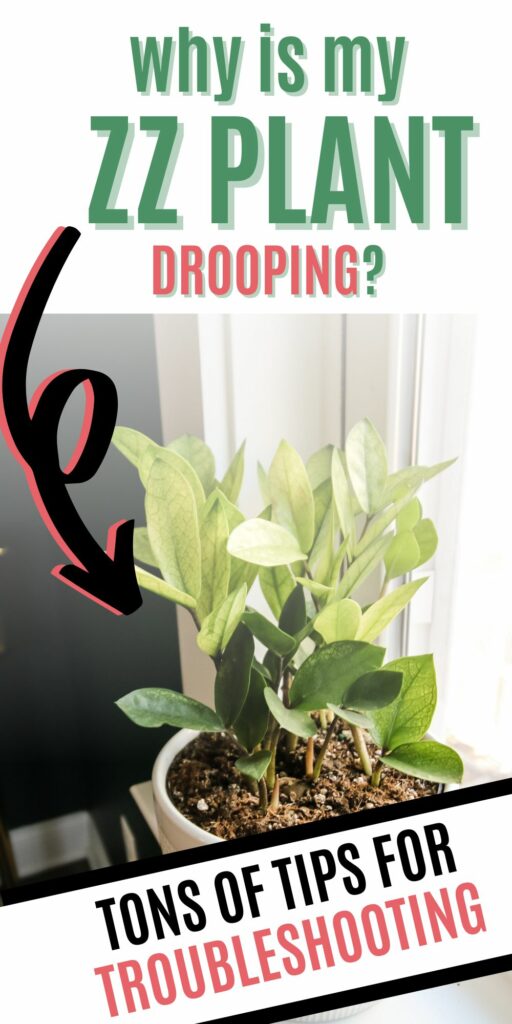
Want more ZZ plant topics?
- Raven ZZ plant care guide
- The Best ZZ Plant Soil
- Why is my ZZ plant getting yellow leaves?
- Why is my ZZ plant not growing?
- Why is my ZZ plant turning brown?
Free printable ZZ plant care guide
Join the (free!) KeepYourPlantsAlive+ community to access this exclusive printable plant care guide! Once you sign up, you can right click & save the JPG care guide. Or keep scrolling for more!
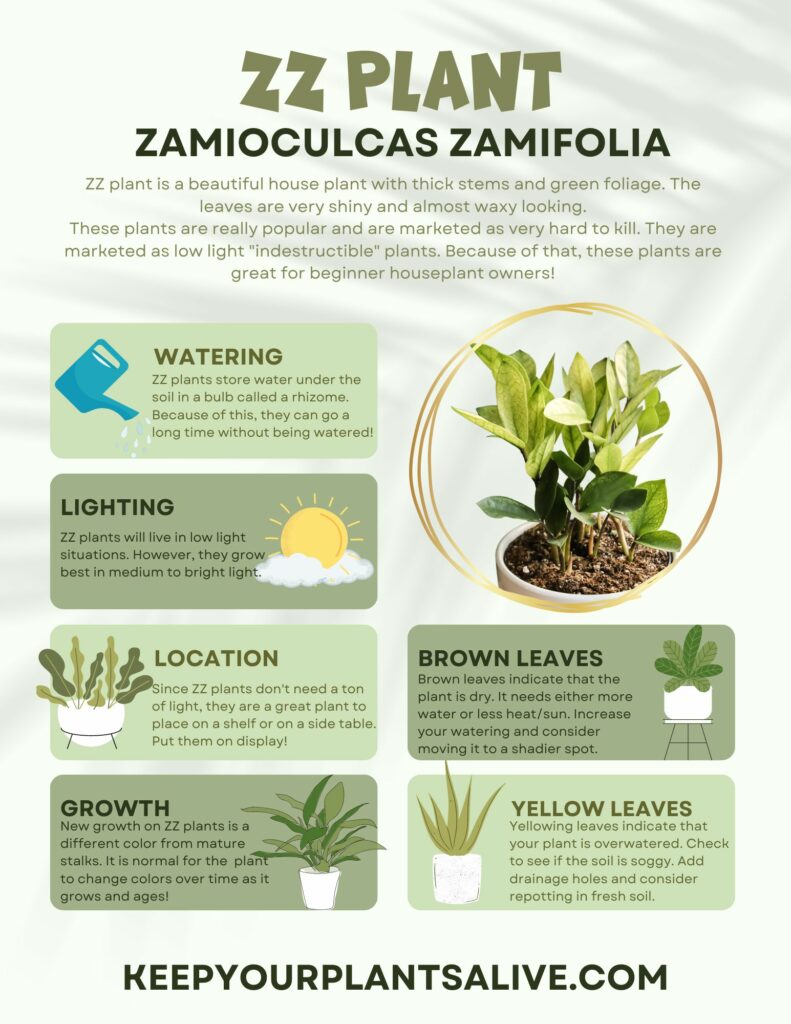
What is causing my ZZ plant to droop?
The reason for your ZZ plant dying may lie in:
- soil moisture
- drainage problems
- exposure to the sun
- root issues
Primarily, check the soil moisture level with a wooden stick, finger, or moisture meter. Quite often, an inadequate moisture level can lead to the leaves of your ZZ plant wilting.
With that in mind, before watering, the soil should be completely dry, almost sandy-like.
Then proceed to check the light exposure - despite being African natives, ZZ plants love their shade, so keep them in a cool area.
Next on the list is drainage. As you know, drainage holes are mandatory since soaked roots only lead to root rot, ultimately to your plant's untimely death.
The last step of detection is to evaluate the root. If there are signs of rotting or discoloration, you should react faster.
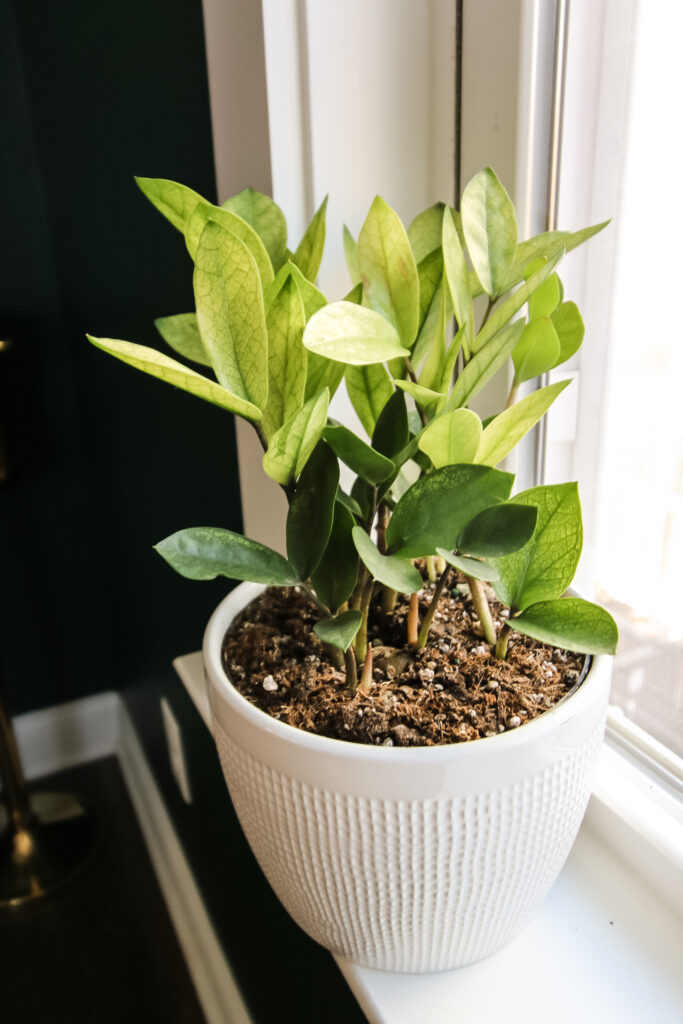
How to revive a drooping ZZ plant
Now that you know what causes ZZ plant drooping, it’s time to plan your rescue journey! Here’s how you’ll do that:
Step number one: Adjust water habits
As previously mentioned, the main reason why you might have a droopy ZZ plant is because you have given it too much water.
To prevent this from happening, always check if the soil is dry before your next water. Of course, watering needs will vary from region to region, and the season also plays a major role as well.
But as a rule of thumb, you should water your ZZ plant every three weeks or once every month.
We know this may seem like too little, but trust our expertise!
Additionally, since summer days are much hotter, the soil will dry out faster, so you’ll have to amp up the watering, especially if you’re keeping your ZZ plant outdoors.
If you still put too much water in the last period, let the soil dry out completely before rewatering.
Alternatively, start slowly if you've forgotten to water your ZZ plant for a while, as this can also cause ZZ plant drooping.
Gradually increase the frequency and return to the regular watering schedule after reaching the desired humidity value.
Step number two: Revamping lighting conditions
What if improper lighting is why your ZZ plant wilting? You already know it doesn’t like direct sunlight, so keeping it in shady areas is necessary.
The first signs you will notice are yellowed scorched leaves, which also become droopy in a short period.
Move your ZZ plant under the pergola or eaves if you keep it outside or in a north window in the home. Simply put, provide the plant with a source of indirect dead light.
If you lack light in the home, consider the possible options of an artificial light source like a grow light.
Alternatively, move it to a brighter place near a window or in the yard but under the eaves to not create a counter-effect.
Find out which way your plant is hanging or leaning. Often these changes can tell you if it is seeking a light source or running away from it.
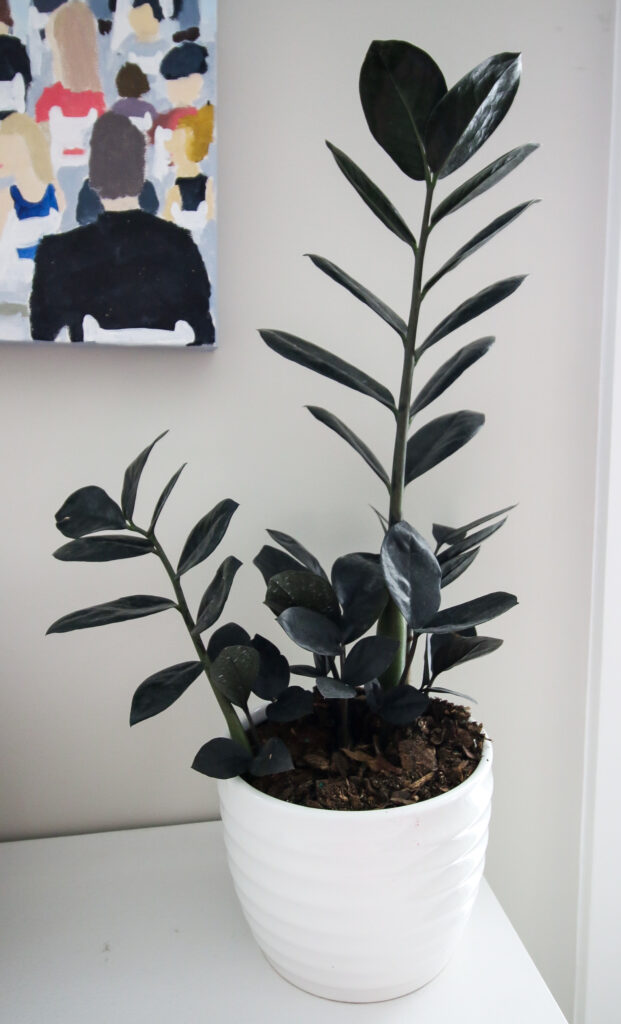
Step number three: Repot wisely
Another reason why your ZZ plant is drooping may be due to its “home”. While these plants don’t grow too big, their roots tell a different story.
If they’re all around the pot, it means that they don’t have space to grow anymore, and they’re practically suffocating.
Naturally, this calls for repotting!
However, be sure to check whether it’s completely ready to do so; otherwise, the wrong timing can be fatal for the ZZ.
Universal advice is to repot only in spring, before the season of intense growth and flowering. You must also not forget that changes are best if made gradually.
For example, if you replant in spring, wait a few days before taking the plant outside. The only exception to the rule is if you consider the root to be destroyed. It happens most often from overfertilization, too much water, or pests.
If your ZZ plant is drooping, remove it from the pot and analyze the root, but first, clean it well with water and hydrogen peroxide. Remove any rotten parts and prepare for replanting.
And now comes the most challenging part: choosing a pot. Selecting the wrong pot for plants can be fatal.
The drooping process will accelerate if the plant does not have enough room to grow or is in a pot that constantly soaks up water.
Choose a size 1-2 inches larger in diameter than the previous pot to let the ZZ plant grow correctly. The preferred potting depth is 8-10 inches for medium plants.
If not, don't forget to make at least 2 drainage holes at the bottom. This is also a good idea if you are using decorative pots, with the pot-in-pot method.
Regarding the material of the pot, choose one that will allow evaporation and expulsion of excess water.
Such examples are clay, terracotta, or ceramic.
Finally, use fresh soil. Let it stand for at least 1 day at room temperature, and do not water the plant immediately after transplanting. Wait for it to adapt for 1-2 days.

Step number four: Pruning
Small pots and overly-long branches are a predisposition to a hanging plant. After choosing a suitable pot, you need to take care of pruning.
It's perfect to do this every 6-12 months, but if you notice that excess branches have appeared or they have turned brown and yellow, don't hesitate to chop them off.
Use a sterile blade and sterilize it after pruning.
Step number five: Fertilization
Now, for the final step!
Overfeeding will cause ZZ plant drooping - period. Recommended fertilization is once a year, in the growing season.
If you supply it with too many nutrients, the ZZ plant doesn't know how to deal with them, so it hangs down.
If you have fed too often, move the plant to another soil following the instructions from Step number 4.
For your next fertilization аnd appropriate fertilizer ratio, follow the instructions on the fertilizer label.
Your journey from a droopy ZZ plant to a vibrant one will be successful. In addition to growing a beautiful plant, your gardening skills will grow. The revitalized ZZ plant will be a testament to your success!
Thanks for reading!


Hey there, I'm Morgan, a houseplant enthusiast from sunny Charleston, South Carolina. Growing up surrounded by my mom's lush orchids and African violets, I discovered the magic of bringing nature indoors. Thanks to the pandemic, I delved deeper into houseplants, discovering their power to uplift moods and transform spaces. I'm here to spill all my secrets, helping you pick the perfect houseplant - and make it happy. Let's keep your plants alive, together! 😊


